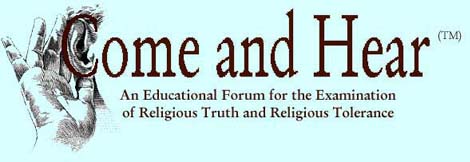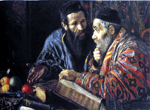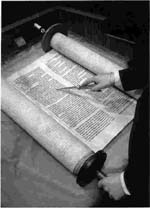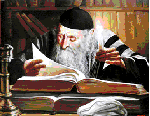Rabbinic Commentary on the Babylonian Talmud (original) (raw)


  |
Rabbi Dr. J. H. Hertz Foreword (to the Soncino Talmud) Foreword to Seder Mo‘ed Foreword to Seder Nashim — The Very Rev. the Chief Rabbi of the British Empire, the late Dr. Joseph Herman Hertz wrote forewords for three of the six Soncino Talmud Seders. His endorsement of the Soncino product was implicit in his participation, and explicit in his words. Rabbi Dr. Hertz's blessings of the Soncino project from the position in the head rabbinate, which he held from 1913 to 1946, indicates a solid endorsement of the text by Orthodox Judaism. The endorsement of the Soncino continued through his successor, Chief Rabbi Israel Brodie, who wrote the foreword for the final Soncino Seder. Rabbi Israel Brodie Epilogue (to the Soncino Talmud project) Foreword (to the General Index, 1952) — The Very Rev. the Chief Rabbi of the British Empire, the late Dr. Israel Brodie wrote the foreword for the final Soncino Seder in 1948, and titled it "Epilogue". Rabbi Dr. I EpsteinIntroduction to Seder Zera‘im Introduction to Seder Mo‘ed Introduction to Seder Nashim Introduction to Seder Nezikin Introduction to Seder Kodashim Introduction to Seder Tohoroth Introductory Essay: Social Legislation in the Talmud — Rabbi Dr. Isidore Epstein was the editor of the Soncino Talmud project, recruiting many greats of Judaism to assist him in the task, personally reviewing all of the work as it was produced, and coordinating the many details of notation, and transliteration of Hebrew words. He was already a giant of Judaic scholarship when he took on the project with a number of scholarly publications to his name, and president of Jews' College at the University of London, now called the College of Jewish Studies. The Universal Jewish Encyclopedia (1945) writes of Rabbi Dr. Epstein: "Epstein, Isidore — scholar, b. 1894. He was educated in Paris under Zadoc Kahn, chief rabbi of France, and at the seminary of Pzsony (Pressburg) in Hungary, receiving rabbinical diplomas from Abraham Isaac Kook, chief rabbi of Jerusalem, and Rabbi Israel Hayim Daiches of Leeds, England. He came to England in 1911 and studied at East London College and Jews' College, London. In 1920 he was appointed rabbi at Middlesborough. In a paper read before the third conference of Anglo-Jewish preachers (1927), Epstein urged that a world-wide rabbinical synod deal with the problems of Jewry. The following year he was appointed lecturer in Semitic Languages and librarian at Jews' College and was also chairman of the Council for Jewish Adult Education."He is the author of The Responsa of Rabbi Solomon b. Adret of Barcelona (1925), a study of Jewish communal life in the 13th cent.; a sequel, The Responsa of Rabbi Simeon b. Zemah Duran (Tashbaz, 1361-1444) as a Source of the History of the Jews in North Africa (1930); Judaism of Tradition (1931), a collection of essays; and Judaism, in a series of studies of the great religions of the east. Epstein was editor of a collection of Anglo-Jewish papers (1935) in connection with the eighth centenary of the birth of Moses Maimonides, and of the elaborate translation into English of the Babylonian Talmud issued by the Soncino Press of England (1935- )." Maurice Simon Introduction to Berakoth Introduction to Gittin Introductory to Baba Bathra (with Rabbi Dr. I.W. Slotki) Rabbi Dr. H. Freedman Introduction to Shabbath Introduction to Nedarim Introduction to Baba Mezi‘a Introduction to Sanhedrin (with Jacob Shachter) Rev. Dr. Israel W. Slotki Introduction to Yebamoth Introduction to Kethuboth Introductory to Baba Bathra (with Maurice Simon) Introduction to Horayoth Introduction to Niddah Introduction to Tohoroth Rabbi B. D. Klein Introduction to Nazir Rev. Dr. Abraham Cohen Introduction to Sotah Introduction to Abodah Zarah Dr. E. W. Kirzner Introduction to Baba Kamma Jacob Shachter Introduction to Sanhedrin (with Rabbi Dr. H. Freedman) Rabbi Michael L. Rodkinson The History of the Talmud (1903) — Rabbi Rodkinson (1843-1904) first published his ten volume English language New Edition of the Babylonian Talmud between 1896 and 1903 under the editorship of the Rabbi Dr. Isaac M. Wise, the renowned pioneer of Reform Judaism. A second edition was published in 1918 by the New Talmud Publishing Company. Rabbi Rodkinson's The History of the Talmud, which appears as Volume X of the 1918 edition, is currently on line at Sacred Texts (http://www.sacred-texts.com/jud/talmud.htm). The History of the Talmud includes a thumbnail biography of each of the Talmud Sages and a history of attempts made to destroy or censor the Talmud over the centuries. Sadly, despite the efforts they made to bring the Talmud to the people, Rabbis Rodkinson and Wise abridged sections of the text. Rabbi Rodkinson explains his reasons for doing so in footnotes and in History, apparently without realizing that his New Edition was a part of the phenomenon he deplored. Rabbi Dr. Louis Finkelstein "Foreword," to The Pharisees: The Sociological Background of Their Faith — Rabbi Dr. Finkelstein wrote The Pharisees (1938) while he was Teacher of the Talmud at the Jewish Theological Seminary of America (JTSA), a center for Conservative Judaism. "His The Pharisees is a study of the sociological background of the faith and achievement of this greatly misunderstood and misinterpreted party in Jewish history and religion," says the Universal Jewish Encyclopedia (Vol. 4, page 307). Rabbi Dr. Finkelstein, the son of a rabbi, was educated at the College of the City of New York and Columbia University. He received is ordination as rabbi from JTSA 1919. He was appointed as professor of theology at JTSA in 1931 and was elected provost in 1937. In 1940 he was elected the fourth president of JTSA and held that post until his retirement in 1972. Rabbi David Bar-Chayim, The Jews Are Called "Man" (See introduction to Rabbi David Bar-Chayim on the Supplement Page.) |
|---|
 Navigate This Site
Navigate This Site  Come and Hear™ Home
Come and Hear™ Home